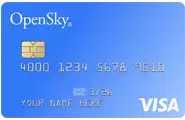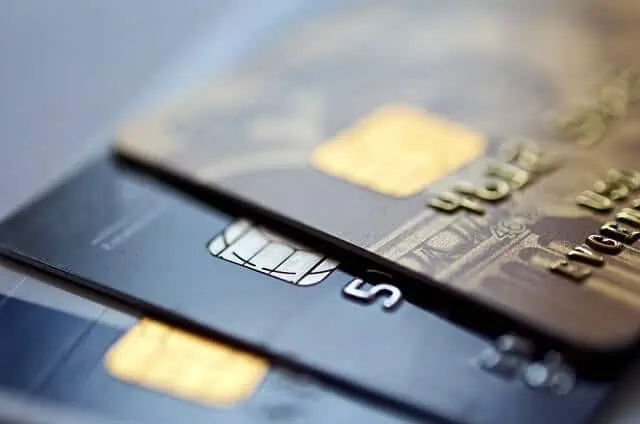Getting started with credit can be difficult if you don’t have any. If you’re new to the idea of credit cards or are trying to build your credit history, it’s time to know more about how people with no credit can get a starter card and use it responsibly over time to create their credit score!
This article will walk through what having “no credit” means, how to qualify for a starter card, how best to use this beginner’s card, what to look for in credits cards for people with no credit, and other related topics that might come up along the way.
Table of Contents
Best Credit Cards for No Credit History—Top Picks
|
Primary Rating:
3.4
|
Primary Rating:
3.5
|
|
No annual fee
|
No annual fee
|
Best Credit Cards for No Credit History Applicants
Have a look below at the best credit cards for little credit history applicants to consider for building their credit.
1. Petal® 2 “Cash Back, No Fees” Visa® Credit Card
The Petal® 2 “Cash Back, No Fees” Visa® starter credit card wants to take to heart people’s thoughts on it being time for a card company to help people succeed financially. To heed this call, Petal® has used modern technology to design credit card products that help you budget, control your spending, and build credit.
This card is best for those with thin to no credit files because Petal® accepts applicants based on cash flow underwriting alone—meaning no credit history is required. And if you have a credit score, you can get the opportunity for acceptance with a fair credit rating, meaning you need a minimum credit score of 600 or better. If you have a credit score of 720 or better, Petal® auto-approves your application.
This credit card issuer reports your payment history to all 3 major credit bureaus, helping you build credit.
With 2% – 10% cash back at select merchants and up to 1.5% cash back on eligible purchases after making 12 on-time monthly payments, Petal® 2 might be an excellent choice to consider as a beginner credit card.
This credit card charges no fees whatsoever, letting you avoid simply holding the card in your wallet.
- No annual fee–in fact, no fees of any kind
- Up to 1.5% cash back on unlimited everyday purchases (1% right away increases to 1.25% after 6 monthly on time payments and 1.5% after another 6 monthly on time payments)
- 2-10% cash back at select local and national merchants
- See if you’re pre-approved in minutes without impacting your credit score
- No credit score? No problem. Credit history isn’t required for approval
- Get an automatic credit limit increase after 6 qualifying on time monthly payments. Terms apply
- Build credit alongside hundreds of thousands of Petal card members
- Petal reports to all 3 major credit bureaus
- Pay with ease with a contactless card or on your phone using Apple Pay, Google Pay, or Samsung Pay
- Zero liability fraud coverage
- No security deposit required
- Card issued by WebBank
- Cash back on everyday purchases, as well as potential for extremely high cash back with select merchants
- No fees whatsoever
- Minimum credit score for consideration is higher than Petal® 1.
2. Petal® 1 “No Annual Fee” Visa® Credit Card
Like the first Petal® starter credit card above, this alternative uses modern technology to design credit card products that help you budget, control your spending, and build credit. The Petal® 1 “No Annual Fee” Visa® card is also best for those with thin to no credit files because Petal® accepts applicants based on Cash Flow underwriting alone.
And if you have a credit score, you can get the opportunity for acceptance with a low to a fair credit rating of 550 or better. If you have a credit score of 720 or better, Petal® auto-approves your application.
- No annual fee, and no security deposit required
- 2-10% cash back at select local and national merchants
- See if you’re pre-approved in minutes without impacting your credit score
- No credit score? No problem. Credit history isn’t required for approval
- Get an automatic credit limit increase after 6 qualifying on time monthly payments. Terms apply
- Build credit alongside hundreds of thousands of Petal card members
- Petal reports to all 3 major credit bureaus
- Pay with ease with a contactless card or on your phone using Apple Pay, Google Pay, or Samsung Pay
- Zero liability fraud coverage
- Card issued by WebBank
- No annual or foreign transaction fees
- Potential for extremely high cash back with select merchants
- No everyday cash-back feature
- Cardholders are subject to late and returned payment fees
- Higher APRs and lower max credit limit than Petal® 2.
3. Deserve EDU Mastercard for Students
The Deserve EDU Mastercard for Students is an award-winning student credit card for all students—both from the U.S. and visiting from abroad. For international students, you do not need a SSN to apply.
The Deserve EDU starter credit card is a non-conventional option that acts as neither a secure credit card nor a sub-prime card. This card works well for international college students who lack a Social Security Number.
For signing up, you can receive one year of Amazon Prime Student after making $500 of purchases in the first three billing cycles (Lifetime Value of $59).
Likewise, you can also earn 1% cashback on all purchases, receive cell phone protection of up to $600 and not have international transaction fees on purchases abroad.
- The Deserve® EDU Mastercard, an unsecured credit card aimed at college students, allows you to earn 1% cash back on all purchases and charges no annual fees.
- Receive one year of Amazon Prime Student on Deserve® (lifetime value of $69) after spending $500 in the first three billing cycles with your EDU card
- Feel secure with cell phone protection up to $600 per claim
- Manage and track your spending, set automatic payments, and securely freeze your card all through one easy to use app.
- No Social Security Number required for international students to apply.
- See if you prequalify in minutes, with no impact to your credit score
- No annual fees
- Receive one year of Amazon Prime Student after hitting spending threshold
- No SSN# required for international students to apply
- Low ceiling (1%) for cash-back rewards
4. Discover® it Student Cash Back
Discover® it Student Cash Back offers several benefits students might find helpful as a starter credit card.
This serves as one of the better cards for no credit because it allows you to earn a high rewards rate when used on rotating quarterly bonus categories, up to 5% cashback. Further, you can participate in the Unlimited Cashback Match — only from Discover.
The Unlimited Cashback Match will have Discover automatically match all the cash back you’ve earned with your card over your first year.
There’s no minimum or maximum rewards, just a dollar-for-dollar match on all the cash back you’ve earned. Outside of the bonus categories listed by the card, all other purchases receive 1% cashback.
This card has no annual fee from the Discover® it Student Cash Back and even allows you to earn a statement credit each time you refer a friend, and they’re approved for this no annual fee unsecured credit card for students.
Keep track of your credit score on this unsecured card with a free Credit Scorecard.
5. Discover® it Secured Credit Card
Discover® it’s secured card is another card from the Discover credit card issuer that can provide a way to build or rebuild your credit history.
You get an actual card with no annual fees, and Discover® will report your progress to all three major bureaus, unlike most debit cards or prepaid cards.
When you apply for your Discover® it secured credit card, you place a minimum $200 refundable deposit down at opening. Your maximum credit line will equal that amount (up to $2,500) but will be determined by your income and ability to pay.
You’ll then be able to use this as a way of building good habits, like responsibly paying back what you owe each month and never going into debt.
It’s also risk-free to see if you qualify. You can see if you’re pre-approved for the Discover® it secured credit card that requires a security deposit without affecting your credit—there are no credit check implications on your credit score.
6. Secured Mastercard from Capital One
The Secured Mastercard from Capital One offers no annual fees and instant credit approval, meaning you can get a credit card in seconds.
You put down a refundable deposit starting at $49 to get an initial $200 credit line. With enough responsible card use, you could earn back your security deposit as a statement credit.
You can also be considered for a higher spending limit in as little as six months without an additional deposit required.
7. Self – Credit Builder Account + Secured Visa® Credit Card
The Self – Credit Builder Account + Secured Visa® Card acts as a product pairing focused on building your credit. With the credit builder account, you can have payments reported to all three credit bureaus.
The card requires a $100 minimum security deposit and charges a $25 annual fee. There is no minimum credit score required because this is a secured credit card.
8. OpenSky® Secured Visa® Credit Card
The OpenSky® Secured Visa® Credit Card requires no credit check (no minimum credit score required) and offers a refundable deposit* that becomes your credit line limit on your Visa Card.
The OpenSky® Secured Visa® Credit Card reports to all three major credit bureaus, allowing you to build credit. You can use the dedicated credit education page from OpenSky to learn more about improving credit scores and how to manage starter credit cards wisely.
- New feature! Earn up to 10% cash back* on everyday purchases
- No credit check to apply. Zero credit risk to apply!
- Looking to build or rebuild your credit? 2 out of 3 OpenSky cardholders increase their credit score by an average of 41 points in just 3 months
- Get free monthly access to your FICO score in their mobile application
- Build your credit history across 3 major credit reporting agencies: Experian, Equifax, and TransUnion
- Add to your mobile wallet and make purchases using Apple Pay, Samsung Pay and Google Pay
- Fund your card with a low $200 refundable security deposit to get a $200 credit line
- Apply in less than 5 minutes with their mobile first application
- Choose the due date that fits your schedule with flexible payment dates
- Fund your security deposit over 60 days with the option to make partial payments
- Over 1.4 Million Cardholders have used the OpenSky Secured Credit Card to improve their credit
*See Rewards Terms and Conditions for more information
* The refundable deposit you make when opening your account is important, because it means you can open an account without a credit check. Your security deposit is returned to you once your credit card account is closed and the balance is paid in full. OpenSky may use your security deposit to expedite the pay down of your outstanding balance. Please refer to the Cardholder Agreement for additional details related to the security deposit.
9. Citi® Secured Mastercard
The Citi® Secured Mastercard is a no annual fee card aimed at helping you to build credit when used responsibly.
A $200 minimum security deposit opens your account and will be equal to your credit limit. There is no minimum credit score required because this is a secured credit card.
What Does Having “No Credit” Mean?
Everyone has to start somewhere. That means you initially have no credit but eventually take specific actions like opening a credit account, loan or credit card, which the major credit bureaus deem essential for building creditworthiness—and, by extension, establishing credit for yourself.
Not everyone takes the same path to build credit. Some of your first steps could include:
- Piggybacking on credit cards from others with an authorized user status
- Applying for joint credit cards
- Asking a family member to co-sign on a credit card
- Opening a secured credit card
- Looking for unsecured credit cards for no credit history applicants
- Going for a credit builder loan or line of credit
- Reviewing credit cards for kids and credit cards for teens
- Accepting “prequalified” offers on unsecured credit cards
The options you have to begin building credit from nothing and establishing a credit score record aren’t one-dimensional. Any of the above actions will work to beef up your thin credit profile.
Taken together, one or any combination of these options will build credit and soon expand on your limited credit history. You will need to work hard to develop good money habits once you get a credit card.
This will include making on-time payments, managing your spending, sticking to a budget well enough to pay off your credit card balance in full each month and more.
Done well and over long periods, the three credit bureaus will award you a respectable credit score, allowing a credit card issuer with more stringent credit requirements to accept your application or even grant an existing credit account with a higher credit line.
In sum, when you take deliberate actions to build and improve your credit history, you will qualify for more favorable financing terms, providing you with more financial flexibility.
Try not to look at others with perfect credit scores and think how unfair it is that you don’t have access to the same credit opportunities they do.
You are, after all, in control of your financial destiny with how well you manage money and make responsible decisions when spending.
Remember, everyone has to start somewhere. If you need some form of plastic and don’t feel ready for bona fide credit cards, you can choose to start first with prepaid and debit cards.
This might give you time to manage an account balance and work your way up toward the confidence and responsibility needed for having credit cards in your name.
Related: Best Credit Cards for Teenagers
How to Get a Credit Card with No Credit
Getting your first credit card requires making trade-offs. In exchange for having no credit history, your credit card issuer may want to have more protection for themselves, uncertain of how you’ll handle credit.
This might mean higher interest rates and lower credit limits. So, while they might approve you for a card, you might need to pay more on interest to start if you can’t pay off your balance in full each month.
By making your monthly payments on-time each billing cycle, this can put you in eligibility for other cards that carry higher limits and lower interest rates—as well as other attractive features.
That means not always only having credit cards for no credit history applicants in your wallet.
To get a credit card with little credit history, you should start first with starter credit cards like student credit cards and secured credit cards.
Student credit cards focus on college students who haven’t built credit just yet but want some useful benefits like good grades credits, cashback rewards on their combined purchases, and no annual fee.
Secured credit cards require a refundable deposit to open, which then becomes your credit limit. These act like an unsecured card by allowing you to make purchases against a line of credit which you must then pay off each month to avoid paying interest.
Handling these purchases and payments well for several months may qualify you for an unsecured card and receiving your deposit back.
You might also ask a loved one to become an authorized user on their card. If they have a good track record of using credit responsibly, such as making on-time payments and having low balance levels each month (less than 30% utilization), this will also help you build your own credit.
This card will come with your name on the account, though you don’t carry any responsibility for making payments.
Related: Best Debit Cards for Teens to Become Money Savvy
How to Apply for Credit Cards for No Credit History Consumers
There are different rules in place for young adults under 21 years old because of laws on how financial companies market cards towards this demographic.
As a result, you’ll need a few pieces of information, financial resources or help from another. Specifically, you’ll need the following in most cases:
- Identifying information. This includes a Social Security number or an individual taxpayer identification number (though, some cards don’t require you to have this as you might be an international student applying for a card).
- Income sources or financial resources. This money can be earned or owned by yourself, but it can also be money to which you have a reasonable expectation of access for repaying the debts incurred on the card. This means you can have money from a third-party source count as income such as if you have a spouse who works or has money and you don’t work yourself.
- Monthly cost-of-living information. This includes costs like rent or housing payments.
If you don’t have income sources of your own and are between 18 and 21, you may need to ask someone to co-sign your application, add you as an authorized user on their card, or apply as a joint applicant.
Related: Best Kids’ Debit Cards
What to Look for in Starter Credit Cards
- No Annual Fee. Just because you’re beginning your credit-building journey doesn’t mean you need to carry a card with an annual fee associated with it. Not all cards with an annual fee are bad, but holding off on the annual fee makes sense when you want starter credit cards.
- Payment History Reported to Major Credit Bureaus. The purpose of starter credit cards is to assist with building credit as you have no or limited credit history. If your timely payments don’t get reported, you won’t make progress on building credit.
- Rewards Programs. Having a rewards program can make using a card more useful, though only if you can control your spending.
- Cashback. A cashback card rewards you with a percentage of everyday purchases made on the card in cash rather than points or miles that you can only redeem for specific items. Cashback cards are typically a flat percentage of all everyday purchases made. Cashback makes card purchases earmark a portion of your spending for future use. Some cards allow unlimited cashback, an unlimited cashback match, dollar-for-dollar match and more.
- Rotating Cash Back Bonus Categories. Some card issuers rotate cashback bonus categories to incentivize you to make certain purchases on your cashback card. They will likely still offer a flat cashback rate on all other purchases, like 1% on all other purchases not included in one of the bonus categories.
- Sign Up Bonus. Some credit cards offer a sign-up bonus to entice new cardholders. This can be anything from an intro APR period, free rewards points or cashback bonuses.
- Balance Transfer. If you have credit card debt, a balance transfer may be the right choice for you. Balance transfers enable you to move your existing card balances over at either an intro APR or a low-interest rate. Balance transfers can keep short-term financing costs low until you can pay off your balance. Though, be warned that using balance transfers indefinitely isn’t a strategy for controlling debt. Instead, balance transfers should focus on a short-term solution, not a long-term crutch to financing.
- Low to Mid-Size Credit Limit. If you are trying to build credit, it makes sense that your initial credit limit isn’t very high. You need time to prove yourself responsible with monthly payments before increasing the size of your available balance. If you make your payments on time and maintain a low credit utilization ratio for a period, the credit card issuer should award you with a higher credit limit if you ask or apply.
- No Foreign Transaction Fees. When traveling abroad or shopping online at a foreign store, having no foreign transaction fees (or international transaction fees) is vital for keeping costs low when spending money. Keep in mind that if you are planning to travel internationally, you will want a card with no foreign transaction fees and EMV chip technology for added security against fraud.
- Authorized User. An authorized user card enables you to add your friends, family member or significant other as an authorized user on a credit account. If they build up their credit history and score with this method of using someone else’s available credit, it may be beneficial for them in the long run.
- Co-signer Eligible. If you have a friend or family member willing to co-sign your card application, it’s an option. Keep in mind that if you miss payments and default on the account, they will be held liable for repayment of the debt.
- Mobile App. Having a mobile app is very convenient if you plan to carry your card with you on the go. This can allow you to monitor your account activity, make payments quickly and easily (and securely) over the phone or mobile device.
- Minimum Credit Score Needed for Approval Marketing. Before applying, ensure that your chances of approval are high by checking what’s called a “pre-approval” or pre-qualification rate online before applying.
- Credit Score Monitoring. Keeping track of your credit score over time makes it easy to spot any changes that may have occurred. Having ongoing credit monitoring can be a great way to track whether or not you are making progress on building credit scores.
- Credit Score Improvement Tips. If your score isn’t as high as it could be, there may be ways that you can improve your credit score with some effort and patience over time. The card issuer should offer tips on how to improve credit scores and help you understand how to establish a history of on-time payments.
- Customer Support. Some credit cards offer 24/7 customer support in the form of live chat, phone and email. This is an excellent feature if any issues arise with your account or you need assistance when traveling abroad.
- Emergency Assistance Services. Even though emergencies are unexpected, it’s crucial that emergency assistance services be available when help is needed most. Access to emergency assistance in events like a lost or stolen card, travel delays, running out of money when traveling abroad, and more can provide remarkable value.
- Purchase Protection. When traveling abroad, there are many important factors to consider before hitting the road. Fraudulent charges and issues with purchases made while traveling can be a headache if you don’t have purchase protection in place. Make sure your card carries purchase protection against fraud if you lose or have your card stolen.
How to Establish a Credit Score with No Credit History
Starting with no credit can be a challenge if you don’t know where to begin. Consider the following steps to establish a credit score when you don’t have a credit history.
1. Ask to be an Authorized User
Authorized user status is often the first step many take on the credit building journey. Having someone willing to add you as an authorized user will enable you to build credit by using their available credit.
This card should be in good standing, not maxed out, and the primary account holder should have a history of on-time payments with this card.
2a. Apply for an Unsecured Beginner Credit Card
You can also start by applying for a beginner unsecured card. These cards will allow you to establish a credit history without the need for collateral. Before applying, check your “pre-qualification” rate online and find out if an application fee is associated with this card.
2b. Apply for a Secured Card
Likewise, you can also apply for traditional secured credit cards if no unsecured card offers appear available. A secured card requires you to make a deposit upfront which then becomes your credit limit.
From there, a secured card works just like an unsecured credit card. Credit card issuers want to see how you handle the secured card in your possession.
If you can pay your bills and stick within your credit limit over enough time (usually 3-6 months, but sometimes longer), the credit card issuer will offer to convert your secured card into an unsecured card.
2c. Review Prequalified Credit Card Offers that Report to Major Credit Bureaus
Likewise, you can also review any prequalified offers that come to you directly. Be judicious to make sure the card makes sense for your needs, reports to all three credit bureaus, and doesn’t charge an annual fee (or at least a small annual fee).
3. Maintain Good Spending Control
Undoubtedly, the chief concern for building credit comes from having control over your spending habits. Building credit requires discipline, so make sure that you can stay within your budget and only purchase needed items.
4. Make Payments On Time
Closely related to maintaining good spending habits is making sure you pay your monthly card statement on time.
This factor is one of the most significant components of determining your credit score as it proves creditworthiness the most: you honor your obligation to repay debts you borrow.
5. Pay Off Your Credit Card Bill in Full
With a credit card, it’s essential to make sure that you pay your balance in full every month. Failure to do so will result in interest charges and negatively impact your credit score if the balance represents too large a percentage of your overall available credit.
Maintaining a low credit utilization rate can prove to lenders that you don’t need credit; merely use it as a convenience or a tool—not a necessity. As odd as it seems, you get the best credit scores by having a lot of available credit but never using it.
6. Keep the Account Open and Do This On Repeat
When establishing a credit history for yourself, the most challenging part might be knowing it won’t happen overnight.
A history of repaying your debts on time, managing your finances, limiting how often you access credit and diversifying the credit sources you rely on replicated over many years affects your credit score by as much as 15%.
When you open new credit accounts, try to keep them open if at all possible. Closing your account can affect your credit score negatively by lowering the average age of your accounts.
Further, closing an account can reduce your available credit and thus possibly increase your credit utilization ratio.
If you want to open card accounts you intend to hold for long periods, whether you use them or not, consider no annual fee cards, so you don’t need to pay to keep the accounts open.
If you have a card with an annual fee, you might consider contacting the issuer to see if you can change from your current card to another one without an annual fee.
This maintains the account age but lowers your annual expenses for maintaining your credit.
How Long Does it Take to Build a Credit History?
Building credit history usually takes less time than you think. It can take anywhere from three to six months for a credit card account to start showing up on your credit report.
However, it may be less time than that if you use the same bank or financial institution’s other services like checking accounts and loans. From there, to raise your score higher, you’ll need to pay attention to the most influential factors in determining your credit score.
These are all within your control and mostly rely on you to make prudent decisions with your card, pay on time, live within your means, and not attempt to access too much credit at once.
Doing this consistently across long periods will help your credit improve.
Related: Does Opening a Checking Account Affect Your Credit Score?
What is a Credit Score?
A credit score is a number that predicts how likely you are to repay borrowed money.
It’s a three-digit numerical representation of the information in your credit report, managed by the three major credit bureaus: Equifax, Experian, and TransUnion.
This score ranges from 300 to 850 under the FICO scoring system, with lenders looking at these numbers when deciding whether or not to approve potential loans.
The most critical factor in determining your credit score is payment history, accounting for about 35% of the total. The other most significant factors are amounts owed (30%) and length of credit history (15%).
Balances on different types of loans make up less than 15%, while new account activity only contributes about ten percent.
Building good credit doesn’t happen overnight, as it measures your ability to manage loans and lines of credit wisely and responsibly over time.
Related: How Old Do You Have to Be to Have or Open a Bank Account?
What Goes into a Credit Score?
1. Payment History
Making timely payments is essential for your credit score, representing as much as 35% of your total FICO score.
Missing one payment can harm your credit score, though it shouldn’t ruin it entirely.
Why such a significant impact? Lenders want to assess your ability to repay debts promptly, meaning you pay what you agree to pay when you agree to pay it.
Do this consistently and over long periods, and you will see your credit score increase.
Because of the outsized importance of this credit factor, staying on top of payment due dates and amounts becomes a necessity to build credit.
Keep track of when payments must go to creditors by setting up automatic payments where possible.
Setting your bills on auto-pay can save not only time for individually initiating each payment but also the headache of being late and dinging your credit score.
2. Total Available Credit / Credit Utilization Ratio
Your credit usage, especially concerning your available credit, can determine your credit rating as well.
The metric used to measure this credit usage, called the credit utilization ratio, is calculated by dividing your outstanding revolving credit balances by your total available revolving credit balances.
This ratio provides valuable insight to creditors about how you use credit.
Lenders want to know how much credit you are using, especially how much credit is available.
A high credit utilization ratio (above 30%) will likely hurt your credit score, while a low one (below 20%) may help it or not have any effect at all on your credit rating.
This accounts for 30% of your credit score.
3. Length of Credit History
Lenders want to see how long you’ve had credit and how well you’ve handled while open. This credit factor can determine 15% of your FICO score by evaluating the average age of your open lines of credit.
All things equal, longer average credit histories result in better credit scores.
4. Types of Credit (Diversity or Mix of Credit Lines)
Not only do lenders care about your history and your ability to make timely payments (both huge credit factors), but they also like to see a diversity of good credit opportunities you’ve had in the past and maintain today.
This means having several credit accounts, managing your credit limit responsibly, and maintaining an excellent payment history.
Children won’t have many opportunities to have a wide array of credit lines, but they don’t need these just now. Instead, they can start with a single line of credit as an authorized user through a family member’s existing or new credit line.
If teenagers start building credit now, this new line of credit will still help them in the long run so long as the account remains open.
5. Credit Inquiries (New Attempts to Access Credit)
Creditors also want to see how often you seek new credit. Regularly going after financing may indicate an increased risk because you constantly seek new forms of financing to make your finances stay afloat.
Whether true or not, this can still serve as a red flag on your score, potentially hurting your credit if done too often.
These pulls on your credit, called hard inquiries, stay on your report for two years or longer, depending on the type of inquiry.
A child or person with a thin credit file shouldn’t worry too much about this, as any inquiry that hits their report now will likely fall off before they need it.
At this age, the child wants to establish credit and slowly build their credit limit through having wise credit use and more extended credit history.
What are the Requirements to Get a Credit Card?
1. The applicant must be at least 18 years old (and sometimes 21+)
As a minor, you don’t meet the eligibility requirements to receive a credit card. Once you reach the age of majority (18 in most states), you still face a hurdle to obtain a card by yourself.
You’ll need to meet other criteria outlined in the CARD Act of 2009 related to income or expectation of having access to financial assets.
2. The applicant must have income from a job, other independent income sources
Simply reaching the age of majority no longer qualifies you for a card without meeting additional requirements. The Card Act of 2009 placed restrictions on people between 18 – 20 from easily opening credit accounts.
Further, this law amended the Truth in Lending Act (TILA) to require young adults to provide proof of income from sources like a job (or independently through passive income investments).
3. The applicant can qualify with third-party income if they have a reasonable expectation of access
A later amendment to the CARD Act of 2009 provided an additional provision for getting credit cards if you are 21 or older and have no independent income source.
The amendment allows you to ask a parent, relative, partner, spouse or friend who meets the requirements for receiving credit cards by themselves if you have “reasonable expectation of access” to money held jointly in a shared bank account or another financial account.
You can also ask these same parties to co-sign your application.
4. The applicant needs a registered Social Security Number or Individual Taxpayer Identification Number (usually)
While certainly not always the case, most credit card issuers require you to submit a formal identification number, whether as a Social Security Number (SSN) or Individual Taxpayer Identification Number (ITIN) unique to your identity.
Some cards, like the Deserve EDU card, do not require this information because they target international students who do not have a number assigned to them as non-US citizens but remain in need of credit cards.
Related: How Old Do You Need to Be to Get a Credit Card? [Minimum Age Requirements]
How Else Can You Build Credit with a Limited Credit History—or No Credit at All?
Building up credit can sometimes be a bit of a chicken and egg problem because many methods already require you to have some financial history.
Fortunately, there are ways to start up your credit history—some with the help of friends or family—without already having a high FICO score.
1. Authorized Users
By becoming an authorized user on someone else’s credit card—be it a parent, guardian, or other trusted adult—the credit card issuer will send a card to the primary cardholder having your name appear on the card.
The credit card company holds the person who signed up to be the primary account holder responsible for paying charges on their account.
If an authorized user on an unsecured card makes purchases but doesn’t pay toward the balance, they are not responsible for repaying the balance.
Before getting an unsecured card and being added as an authorized user, make sure you and the primary account holder have agreed on whether or not to use the card you receive.
Further, you should determine this ahead of time because any charges that you make will be their legal responsibility, even if you agree to pay them.
Credit card issuers report your balance and payments every month to credit bureaus. So, even if you don’t receive a physical card, it affects your credit in the same way.
If you don’t meet the requirements for credit cards on your own, having an authorized user status on a cardholder’s account might be beneficial to your credit history and “payment history,” a credit scoring component.
It may cut the time it takes to get a FICO score—one of the most common credit-scoring models—down to less time if you don’t already have one used by credit reporting agencies to mark your creditworthiness. Further, it might also get credit cards in your hands sooner than later.
2. Credit Builder Loans
Credit builder loans and credit cards are very different in how you fund and use them, but both are useful for building credit.
A credit builder loan functions as a tool for people who have low or no credit history. They can use them to begin building up their credit scores by establishing a credit history.
If you build up your score enough, you can qualify for better terms on a credit account, car loan, or other forms of financing.
These loans do not require you to have stellar credit to receive approval, just the income to make payments. They work by depositing money into a bank account and borrowing money from it while making repayments.
You’re essentially taking money out of one pocket and putting it in the other, though you’re doing so with the understanding it builds credit for you.
This will help establish better credit limits on a future credit card account, earn a better interest rate, or receive better overall terms on credit.
Typically offered by credit unions or other smaller financial institutions like a community bank, these loan payments will get reported to the credit bureaus, helping you build your credit.
3. Student Loans
As previously mentioned, an essential part of one’s credit score is a history of on-time payments. If you are timely in your student loan payments, this will help improve your credit. As the amount of money left on your loans gets lower, your score improves.
These loans also help lengthen your credit history. Loans appear on your credit report as soon as they are disbursed, even if you don’t start paying towards them until after you graduate.
An installment loan can also help you have multiple types of debt, beneficial to your credit.
4. Secured Credit Cards
When you turn 18, you become eligible to apply for a credit card in your name. However, you might not have the positive credit history that credit card companies want to see (or any credit history at all).
If this is the case, you might consider applying for a secured credit card to establish credit in college and make payments on time. With enough time, these card payments and good credit habits should be reported to credit bureaus, reflecting on your credit report.
Secured credit cards often serve as the first step for young adults or people who don’t have an established credit history to have access to credit.
Secured credit cards work by having the cardholder make an upfront security deposit to open an account, reducing the risk to card issuers of you defaulting or missing a payment.
Usually, minimum deposits are in lower denominations, between $200 to $500 to start. This represents your credit limit.
Once you apply for a secured credit card and make the security deposit, these secured credit card options work like any other card.
Unlike prepaid cards, the security deposit funds don’t load onto your card and do not get directly used for purchases. Instead, this deposit will be forfeited if you fail to pay your credit card bill.
So, if you make your payments on time, your regular spending activity and collateral will help you to build your credit. To provide you more financial flexibility with time, you may opt to move to unsecured credit card issuers’ options.
Secured cards work best for people with no or bad credit.
5. Apply for Low Limit Unsecured Credit Cards
If you have developed good money habits and think you can handle a line of credit, you may want to start with a low-limit unsecured credit card.
You have several options like a student credit card, gas card, or another low-balance credit card available from credit card companies.
These are all great options if your children attend college and need a credit card that works for expenses away from home.
Likewise, the unsecured card option works for young adults who work full-time and need a way to access credit while possibly earning rewards, cashback, or other benefits from using unsecured credit cards.
You can apply for a card like the Petal® One or Petal® Two credit cards. These cards have low initial credit limit options, offer cashback, and avoid annual fees—all features you should look for in a first card.
These types of cards can help with beginning to build a credit history. Further, if your children have student loans, these will factor into their credit history and build a credit profile for lenders to evaluate future credit needs.
However, if you’d like the card to be under their name and they are underage, they’ll need to look first at getting a prepaid debit card for kids and teens.
Further, you might consider a college student credit card like DeserveEDU.
6. Apply for a Credit Card with a Co-signer
If you can’t become an authorized user on a credit card, you might consider becoming a co-signer on one. Generally harder to find, these types of cards carry a legal responsibility for both account owners.
Authorized users don’t need to face the music if they can’t pay their credit card bill, as the primary cardholder remains liable to the lender.
Having a co-signer credit card works similar to carrying a joint brokerage account or bank account—you both have access to the funds. However, they differ because joint accounts list both owners as equals, meaning they share the account title and legal responsibility.
Co-signer cards usually only list the primary cardholder as the account owner. Both face legal responsibility for making payments, and the debt appears on both users’ credit reports.























![10 Best Banking Apps for Kids & Teens [Kid + Teen Banking] 50 banking apps for kids and teens](https://youngandtheinvested.com/wp-content/uploads/banking-apps-for-kids-and-teens.webp)
![8 Best Teen Checking Accounts [Banks for Teens] 51 best teen checking accounts](https://youngandtheinvested.com/wp-content/uploads/best-teen-checking-accounts.webp)
![11 Best Debit Cards for Kids [2025] 52 best debit cards for kids](https://youngandtheinvested.com/wp-content/uploads/best-debit-cards-for-kids-600x403.webp)
